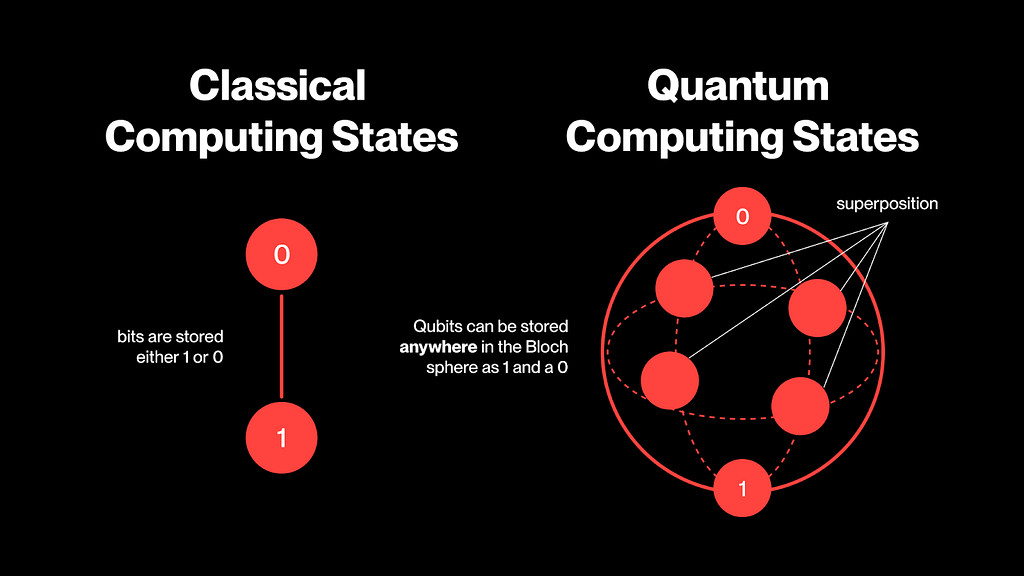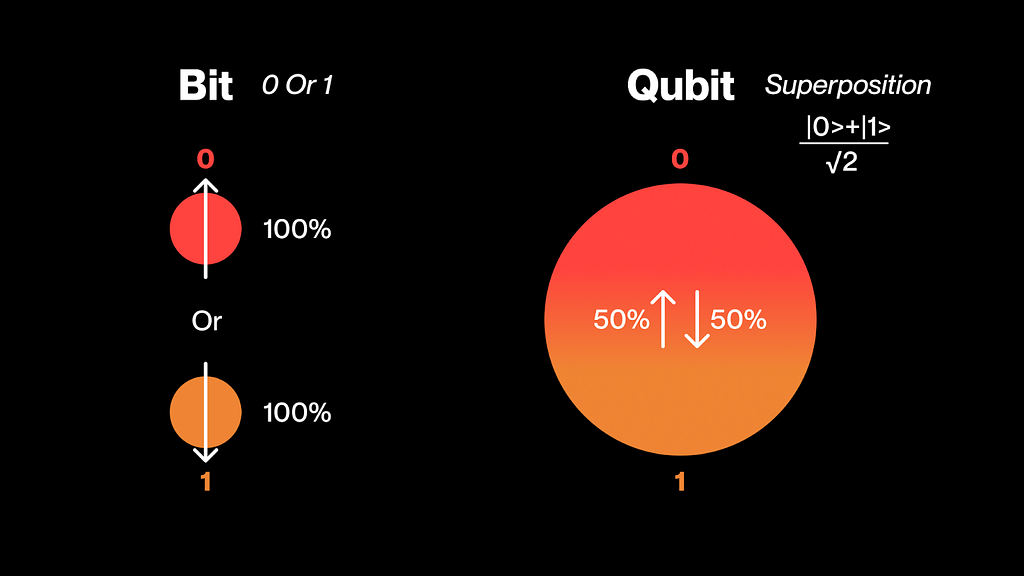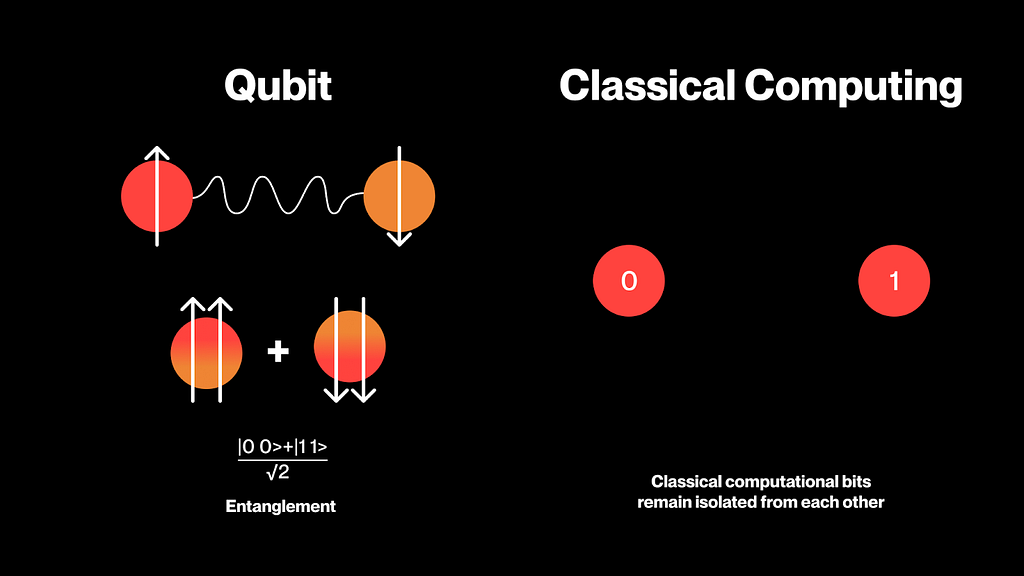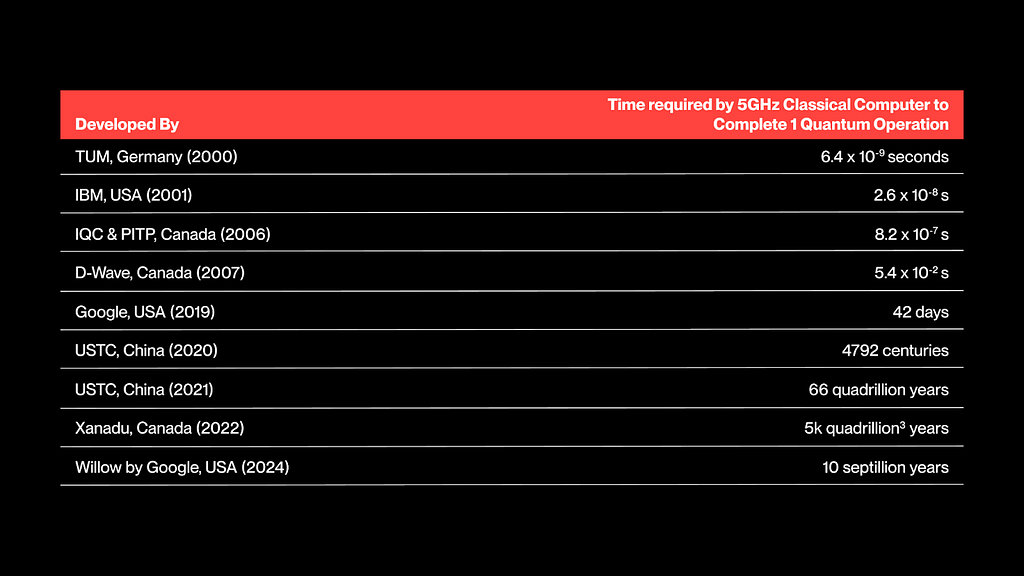No matter what the future of quantum computing holds, it is destined to be an interesting and disruptive path.
Written by: Kava Labs
In the article on AI-driven risk assessment, we have learned how AI enhances cybersecurity through anomaly detection and predictive analysis. However, what would happen if another independent and innovative technology emerged, triggering a new technological paradigm shift within decentralized finance (DeFi)? What if this new technology could completely disrupt the foundation that DeFi relies on by breaking cryptography?

As quantum computing develops, many experts have concerns about the future. These concerns have existed since the inception of cryptocurrency, but they have intensified with Google's announcement of its latest quantum computing chip, Willow in the fourth quarter of 2024.
Therefore, in this article, we will explore the principles of quantum computing, its potential threats to DeFi, and whether the industry should remain vigilant about this in the future.
Comparing Traditional Computing and Quantum Computing
When discussing the threats of quantum computing, it is essential to understand that it fundamentally differs from the traditional computing systems we are familiar with today. To begin to grasp this, we must delve into the smallest unit of digital information — the bit. A bit is the basic building block of all modern computing technologies, historically represented by 0 or 1.
This foundational unit allows modern computing technologies to develop structurally upon it. The power of the binary system enables us to establish a solid foundation upon which larger and more complex systems can be built.
Quantum computing challenges the essence of the binary system by creating an alternative to this computational unit. In quantum computing, the alternative quantum bit (qubit) not only has multiple possibilities for the positions that traditional bits can occupy, but it also has multiple possibilities for whether it can be encoded as 1 or 0.

Superposition
Superposition is one of the cornerstones of quantum computing, but it is very abstract and may be difficult for some to understand. In traditional computing, the state of a bit is always 100% certain, either 1 or 0. In quantum computing, however, a qubit can simultaneously represent both 1 and 0. One can imagine something being both "true" and "not true" at the same time. This seems to have little meaning in traditional thinking and classical models.
The simplest way to explain this phenomenon is through the theory of 20th-century physicist Erwin Schrödinger and his uncertainty principle in quantum mechanics. You may be more familiar with Schrödinger's cat experiment, where we are asked to imagine a scenario: a cat is placed in a sealed box with a Geiger counter and a piece of radioactive material that releases poison gas when it decays. Theoretically, because the decay process of the radioactive material is uncertain, the cat is technically in a state of both alive and dead until the box is opened, as we cannot determine which state is accurate until we open the box to check. A qubit is both "alive" and "dead" until it is forced to compute.

Entanglement
If you are still reading, congratulations, the concept of quantum computing has not yet caused your brain to implode. Now that we understand what qubits are and how they are represented, we need to further explore how the particles within each qubit are interconnected. This is known as entanglement, which is the second cornerstone of quantum computing.
We have seen how quantum computing operates on models similar to Schrödinger's cat thought experiment. However, under the influence of entanglement, quantum computing takes this analogy to a new level. Quantum computing is not just about maintaining two computational states simultaneously; it involves more scenarios where multiple positions interact and change each other. Imagine navigating a maze. In traditional computing, if your first path leads to a dead end, it can be classified as zero. If the second attempt also fails, the process continues sequentially until the correct answer is found. In the same scenario, quantum computing would map all routes simultaneously, with each failed and successful route affecting the outcomes of all other scenarios.

Thought Experiment or Something Else?
While attempting to understand the theory of quantum computing is very challenging, it is crucial if we are to consider the innovative enhancement of computational power. The superposition and entanglement of qubits allow quantum computing to handle problems at a scale and speed far beyond anything we can comprehend today.
In our article on the limitations of technological innovation, we demonstrated the different sizes of modern digital information. From how many KB it takes to store an average word processing file of five pages to how many MB a three-minute MP3 audio file requires, understanding the scale of digital data is key to understanding why the fundamental reconstruction from bits to qubits would produce such a compound effect.
With this reference framework, we can begin to understand the power of quantum computing. Google claims that its newly launched quantum chip, Willow, will solve a problem in five minutes, while the fastest traditional computer on the market would take ten quintillion years (10^27 years) to do the same. Five minutes compared to 10,000,000,000,000,000,000,000,000 years illustrates the difference.

The End of Modern Cryptography?
You may have already seen that quantum computing could begin to pose a systemic threat to the decentralized finance (DeFi) industry. Such powerful computational capabilities are precisely the kind of technology that could replace the cryptographic security underpinning the entire blockchain ecosystem. A brute-force attack could instantly reveal private key information and steal user accounts.
In our previous article, we mentioned that the interoperability integration of AI and blockchain could lead to a "poison pill" effect, where malicious actors operate within it. Now, combining these theories with the potential of quantum computing, it is easy to imagine a future where the entire DeFi sector could be completely dismantled in a matter of minutes.
Reasons for Optimism
If you are concerned about the threat that quantum computing poses to DeFi, there are still several reasons to remain optimistic. First, if you haven't realized it yet, quantum computing is extremely complex, difficult, and expensive. Currently, only a very small number of quantum computers exist, and they are mostly developed in environments tightly regulated and controlled by companies like IBM, Google, Amazon, and Alibaba. These companies have no interest in undermining the cryptographic security of DeFi. Doing so would compromise the same cryptographic security used to protect traditional banking and national defense infrastructures, including nuclear reactors and weapon systems.
Secondly, we often underestimate the importance of our industry. Currently, the total value locked (TVL) in the DeFi space is $125 billion, which is still a very young and small-scale industry in comparison. The market capitalization of the money market banks exceeds $90.9647 trillion, while the integrated oil and gas market capitalization exceeds $109 billion. While this may sound somewhat pessimistic, if quantum computing technology accelerates and becomes a threat, attacking the DeFi space will be one of the least attractive targets, as everything else in the world will also be under attack, and even more vulnerable. Even if DeFi becomes a target, we will face the societal consequences of quantum computing attacks, especially in other more pressing areas, such as global supply chain disruptions, AGI (Artificial General Intelligence), or nuclear weapons deployment. Protecting DeFi and private key security may no longer be our primary concern.
Moreover, as technology advances and new threats emerge, new solutions will also follow. Post-Quantum Cryptography is a significant topic in this field today. Developers have become acutely aware that if quantum computing is unleashed without sufficient security measures, it could pose serious threats. The National Institute of Standards and Technology (NIST) is leading the effort to establish global post-quantum cryptography standards.
We should also recognize that the emergence of quantum computing is a positive force. The powerful computational capabilities afforded by quantum computing models will drive unprecedented discoveries in areas ranging from space travel to the global Internet of Things and AI integration. Through our series of articles, we have seen how AI accelerates innovation in smart vehicles, medical breakthroughs, and drug discovery. Quantum computing will further enhance and accelerate the pace of discovery, potentially surpassing even the most optimistic futurists' imaginations.
Finally, we must acknowledge that quantum computing is still in its early stages. Even though the Willow quantum computing chip has been released, the practical applications of quantum computers in the real world remain limited. For quantum computers to operate fully and integrate with the real world, they must extensively index the current digital environment. Transforming various industries to withstand the threats posed by quantum computing, or merely preparing to embrace the benefits it brings, will be a daunting task that society must overcome. Regardless of what the future of quantum computing holds, it is destined to be an interesting and disruptive path. How DeFi, AI, and post-quantum cryptography respond will become one of the defining periods of the 21st century.
免责声明:本文章仅代表作者个人观点,不代表本平台的立场和观点。本文章仅供信息分享,不构成对任何人的任何投资建议。用户与作者之间的任何争议,与本平台无关。如网页中刊载的文章或图片涉及侵权,请提供相关的权利证明和身份证明发送邮件到support@aicoin.com,本平台相关工作人员将会进行核查。




